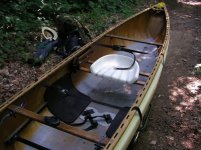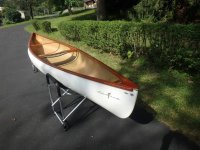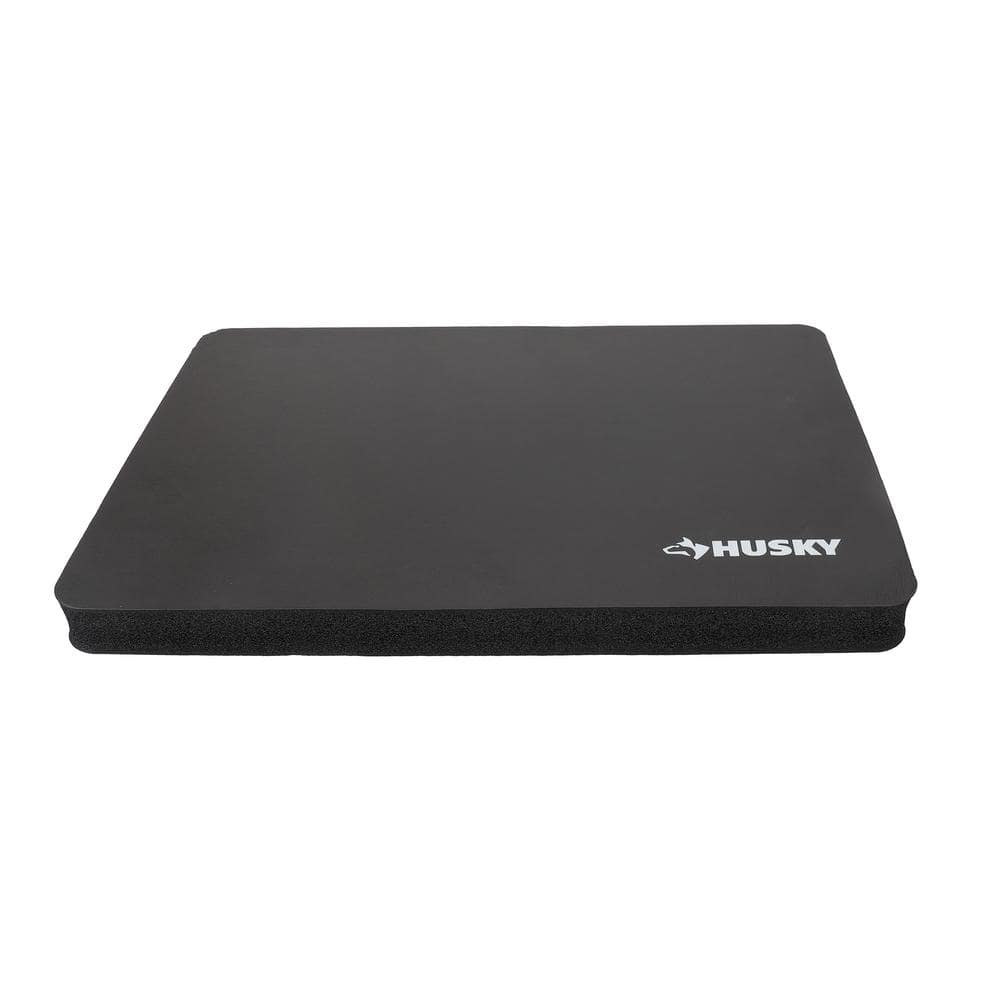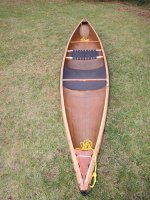Out of curiosity, are you able to elaborate on the ways in which Harold Deal felt the Dragonfly was flawed and how the SRT improved on it?
Maybe "flawed" is not quite the right word.
Remember, the Dragonfly was designed as a whitewater racing canoe, particularly for the "combined class" whitewater event in which the canoe must compete in the whitewater slalom race as well as the whitewater downriver race. Therefore, the Dragonfly was not optimized to have either a slalom hull (with a lot of rocker) or a downriver hull (with little rocker and a long waterline). It is a compromise whitewater hull. In addition, it was not designed to have a lot of volume to carry tripping loads because there are no loads carried in a race. Racers want as light a canoe as possible.
So, after a few years, Harold was not satisfied with the Dragonfly as either a whitewater slalom/play canoe, as his racing career wound down, because it was too long and simply doesn't have enough rocker to be a whitewater play boat. He was also not satisfied with it as a river and lake tripping canoe because he preferred a tripping canoe to have differential rocker, to be longer than the Dragonfly, and to have more and a differently distributed interior volume than the Dragonfly. In addition, he wanted a canoe that was more stable and "sit-able" for sit & switch paddling than the Dragonfly.
What Harold eventually did in the 90's was to design two different canoes—one for dedicated play in hard whitewater (3-5), the Shaman; and one for tripping on a combination of mild whitewater (1-easy 3) and lakes, the SRT. Both are asymmetrical whereas the Dragonfly is symmetrical. The Shaman and SRT share basically the same three foot mid-section while the two ends and rocker are quite different in all respects. He felt that he now had two canoes that were fully optimized for his two paddling interests: whitewater slalom and "hot" play boating, and efficient lake/river tripping with the capacity for heavy loads.
...which makes it sound to me like you feel the SRT is less responsive than the Wildfire—do I understand that correctly?
Paddled empty by someone less than 200 pounds, I find the Wildfire to be more maneuverable and easier to rail than the SRT. As further evidence of this, the Wildfire, Flashfire and Starfire have all been staples of Freestyle paddlers for decades, along with their wood/canvas close-clones made made by Tom MacKenzie. I've never seen anyone paddle an SRT in a Freestyle competition. In fact, after attending my first Freestyle symposium in my SRT in 2009, I immediately went out and bought a used Wildfire because that elliptical hull is so much more amenable to Freestyle turning maneuvers, especially because of it's railed stability for two-knees-in-chine and high-knee railed turns.
On the other hand, if you are tripping with a heavy load, the SRT's greater length, depth and interior volume will retain a lot more freeboard than the Wildfire. Thus, I'd say the SRT may become more maneuverable when the total paddler+gear load starts to exceed about 260 lbs. because the Wildfire's symmetrical rocker will become submerged under heavy loads and bog down it's turnability.
I’ve read that the SRT is very tender too, but if it is even only a little bit less tender than the Dragonfly, then that might make a big difference. But, I'm also not sure how big a deal this really would be
The SRT was designed mainly as a kneeling canoe but with a definite alternate ability to be seated in milder wave/wind conditions. I and many SRT paddlers have installed foot braces for seated paddling. However, once wind, waves or some whitewater shows up, I immediately go down onto my knees. I have even installed thigh straps for whitewater paddling and even use them when I'm in somewhat scary wind waves on lakes.
I only paddled a Dragonfly once about 40 years ago, but I categorize it as a kneeling canoe, as all canoes designed for whitewater are. I suppose a light paddler with excellent balance could sit in a Dragonfly, as he or she could sit in a whitewater play boat for short periods on smooth water, but I suspect the SRT is noticeably friendlier for seated paddling than the Dragonfly. I definitely recall Conk standing in his SRT at times during our Pine Barrens trip.
In this picture you can see the bottom parts of my un-fastex-buckled thigh straps:

In this one you can see my Wenonah foot bar and one of the unbuckled thigh strap ends:




